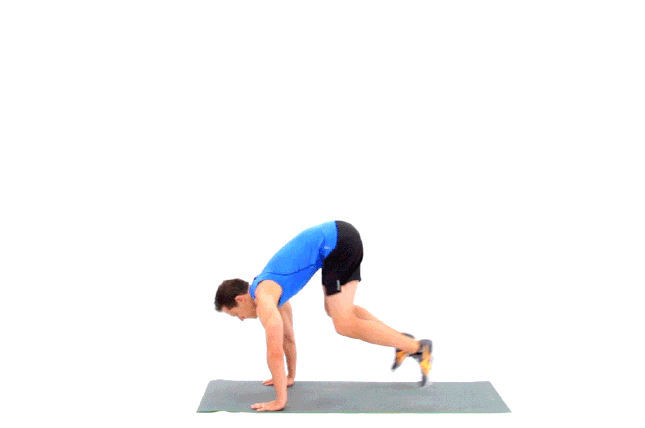What does fact checked mean?
At SportsRec, we strive to deliver objective content that is accurate and up-to-date. Our team periodically reviews articles in order to ensure content quality. The sources cited below consist of evidence from peer-reviewed journals, prominent medical organizations, academic associations, and government data.
The information contained on this site is for informational purposes only, and should not be used as a substitute for the advice of a professional health care provider. Please check with the appropriate physician regarding health questions and concerns. Although we strive to deliver accurate and up-to-date information, no guarantee to that effect is made.
What is a Burpee Exercise? The Benefits and Variations (with Video)

People often have a love-hate relationship with burpee exercises. They love them because they deliver results, require no exercise equipment and can be performed just about anywhere. They hate them because they are so tough and a high intensity workout. They're primarily used by mixed martial artists, the military and other hardcore exercise groups. They're sometimes referred to as the ultimate full-body exercise as it exercises both lower body and upper body muscles.
Who invented Burpees?
Burpees combine a squat, push-up and vertical jump into a sequence of moves performed in quick succession. It's named after its inventor, Royal H. Burpee, an American psychologist who wanted to design a test for agility, coordination and fitness. It was subsequently adopted by the Army and Navy as a means of assessing recruits' fitness level for World War II. The military now sees it as a simple but effective full-body workout and bodyweight exercise.
What is the standard Burpee Technique?
To get the most from burpees you need to do them correctly. With your feet together in the standing position, get down into a squat position and put your hands on the ground just in front of your feet. Keep your feet together and jump them back so you land in a plank position, or push-up position. Bend your arms and do a single push-up. Jump your feet back in and under your body and then tuck jump, or squat jump, and into the air. Land on slightly-bent legs, shoulder-width apart and repeat.
What are the benefits of Burpees?
Burpees workout your glutes, triceps, hamstrings, lower back, quads and pretty much every other major muscle group in your entire body. This makes them a very efficient exercise. It places a significant load on your cardiovascular system so you get a cardio workout without having to run a single step. It also helps burn calories, though that depends on other factors such as your reps and current body weight. This makes them perfect for high-intensity interval training, or Hiit workouts, utilized for pumping your heart rate up. Many personal trainers mix this into workout routines for weight loss or strength training or utilize it as a warm-up.
Burpee Variations
The basic burpee can be adapted in several ways to make it easier or harder. Beginners can skip the push-up and/or jump. Advanced exercisers can add an obstacle to jump forward or sideways over between reps. For example, the burpee box jump is very popular as a variation. They can also do them wearing a weighted vest or holding dumbbells. Some will even add a pull-up between reps.
Incorporating Burpees Into Your Workouts
Try performing 100 burpees as fast as you can, or see how many you can complete in 10 minutes. Alternatively, try the 20-to-1 descending burpee pyramid. Do 20 burpees, rest a moment, and the do 19 and rest again. Continue doing one less burpee per set until you reach one rep. Advanced exercisers can complete this challenge in under 20 minutes. You can also do burpees for distance with a long jump replacing the vertical jump. See how long it takes you to cover 100, 200 or 400 yards doing burpees.
References
Writer Bio
Patrick Dale is an experienced writer who has written for a plethora of international publications. A lecturer and trainer of trainers, he is a contributor to "Ultra-FIT" magazine and has been involved in fitness for more than 22 years. He authored the books "Military Fitness", "Live Long, Live Strong" and "No Gym? No Problem!" and served in the Royal Marines for five years.
